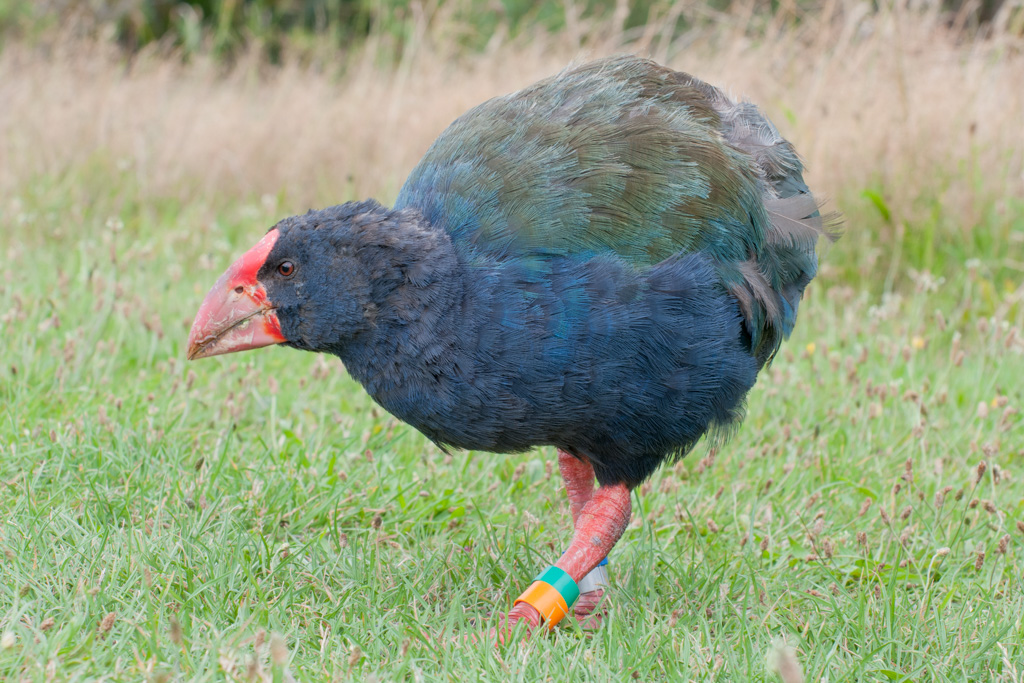
Takahē (Notornis)
A small population of these threatened big, blue birds can be found around the lighthouse and the northern part of the island, snacking on fresh grass roots. Originally two males – called Mr Blue and Stormy – were translocated to Tiritiri for advocacy purposes in 1991. Despite being partnerless they showed clucky behaviour, so they were gifted an egg by the Wildlife Service, which they successfully hatched. Since then there have been a number of translocations of breeding and advocacy birds.
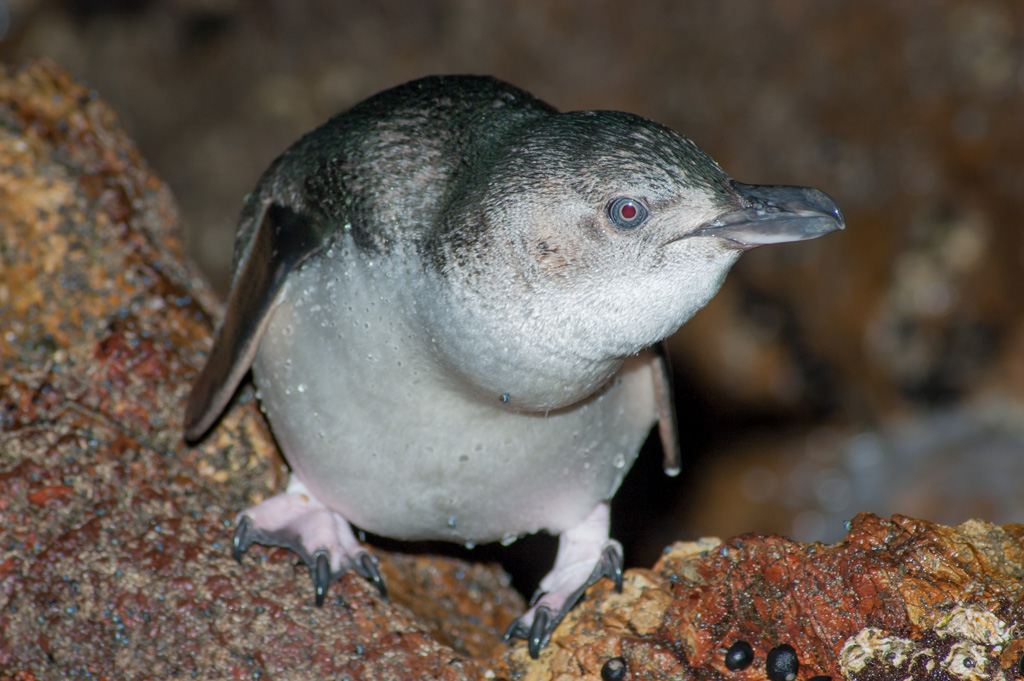
Kororā (Little Blue Penguin)
Situated above the beach On Tiritiri Matangi are penguin nesting boxes used by kororā during breeding and moulting season. The smallest species of penguin, and the most common found around all coasts of New Zealand.

Kōkako (Blue-Wattled Crow)
This grey bird’s mournful call can often be heard before they’re seen on the island. Stubby winged, the kōkako is known to only fly short distances, so it is best to look for them hopping around the branches or on the ground.
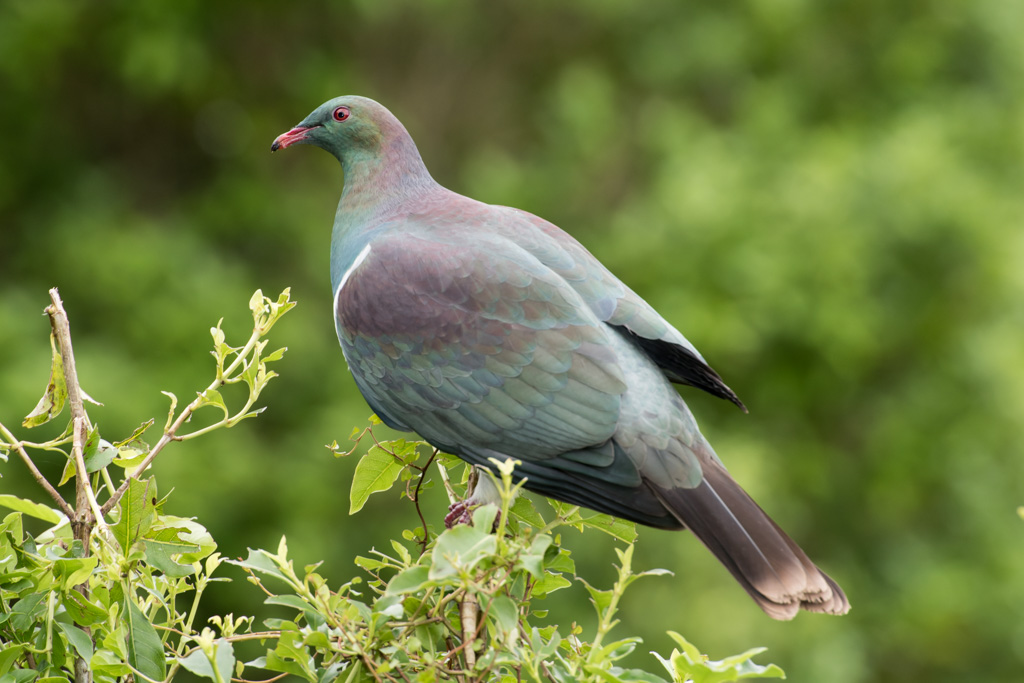
Kererū (New Zealand pigeon)
The kererū is a large bird often seen resting on a pūriri branch after gorging on the fruit. The noisy beat of its wings is a distinctive sound in our forests.

Korimako (Bellbird)
The bellbird is a dark olive green member of the honeyeater family. They get their name from the bell-like quality of its one that can usually be heard at dawn and dusk.
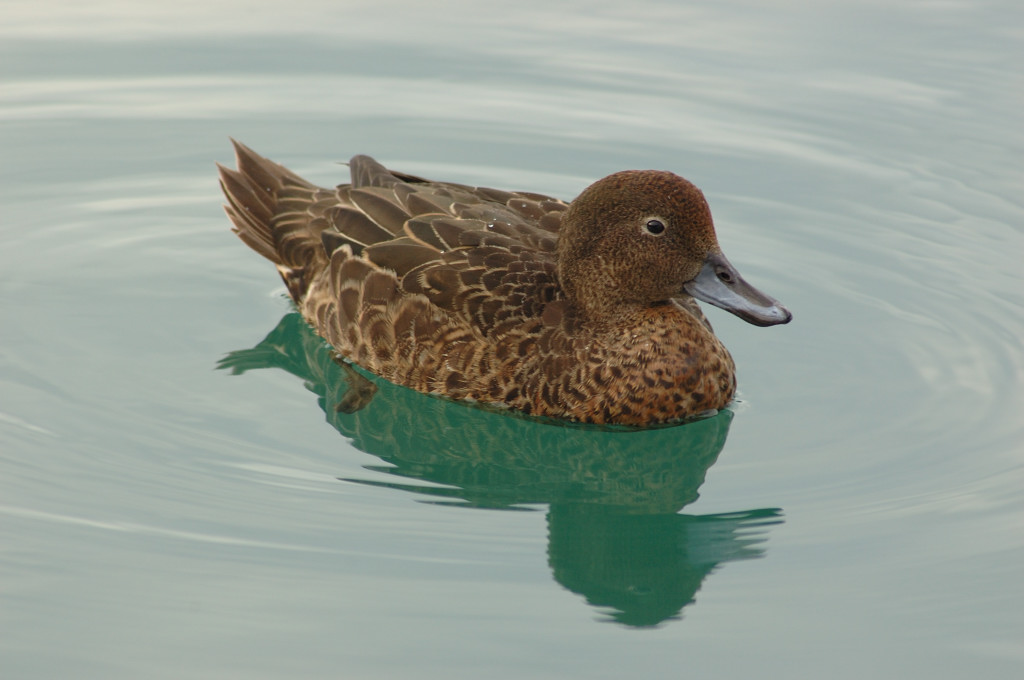
Pāteke (Brown Teal)
One of the world's rarest ducks, the pāteke is endemic to New Zealand, recognisable for their dark brown plumage. There are currently estimated to be between 2,000 to 2,500 pāteke living in a wild state in New Zealand.
Titipounamu (Rifleman)
Many people come to the island with the desire to see this bird, as it is the only publicly-accessible place to see them in the Auckland region.
Thirty one of these tiny birds were transferred onto the island in 2009, followed by two further translocations. Now there are more than 80 known pairs that have spread throughout the island. Unfortunately their high- frequency, low-volume calls are beyond the hearing range of many people, so you’ll need beady eyes to see them.

Hihi (Stitchbird)
Translocated to Tiritiri in 1995, hihi were once widespread throughout the North Island, but predation and habitat loss has devastated their population and range.
Males are easily identifiable with their yellow collar, though the females are more demure. Females can sometimes be mistaken for a bellbird – just look for the distinctive cocked-tail of the hihi. The male’s bright yellow stripe across his wing is actually a good indication of health. A study on Tiritiri has shown how hihi health is directly related to the availability of carotenoids – the yellow pigment that colours coprosma, māhoe and tī kōuka/cabbage tree fruits.
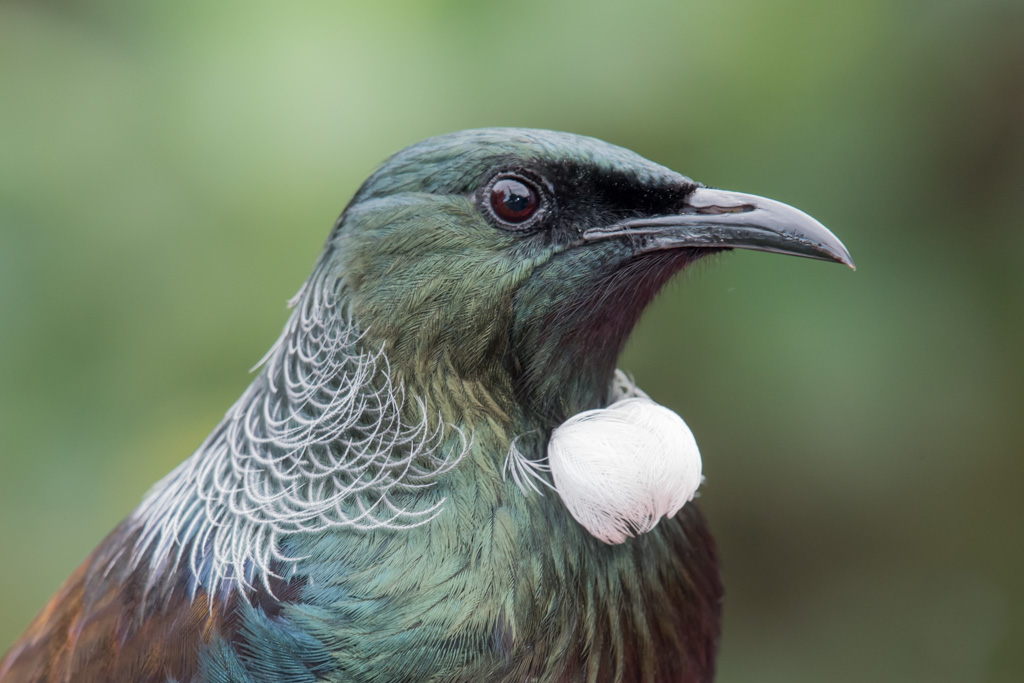
Tui (Parson Bird)
Tūī are boisterous, medium-sized birds, and are a common, widespread bird of forest and suburbia. They are usually very vocal, with a complicated mix of tuneful notes interspersed with coughs, grunts and wheezes.

Kākā (Forest Parrot)
The North Island Kākā is a large olive brown forest parrot. Listen for the repeated, rhythmic "Ka-aa" when flying above the forest canopy. or a harsh grating "kraak" alarm call when disturbed.

Kākāriki (Red-crowned parakeet)
Very rare in the North Island, Kakariki are small forest-dwelling birds and can be heard by the loud chatter "ki-ki-ki-ki" as they fly above the forest canopy.

Pōpokotea (Whitehead)
Usually found in flocks high in the forest canopy, these birds have a variety of calls, and clear tuneful calls that fill the forest with a pleasant cacophony of sound when they appear in flocks high in the canopy of the forest.
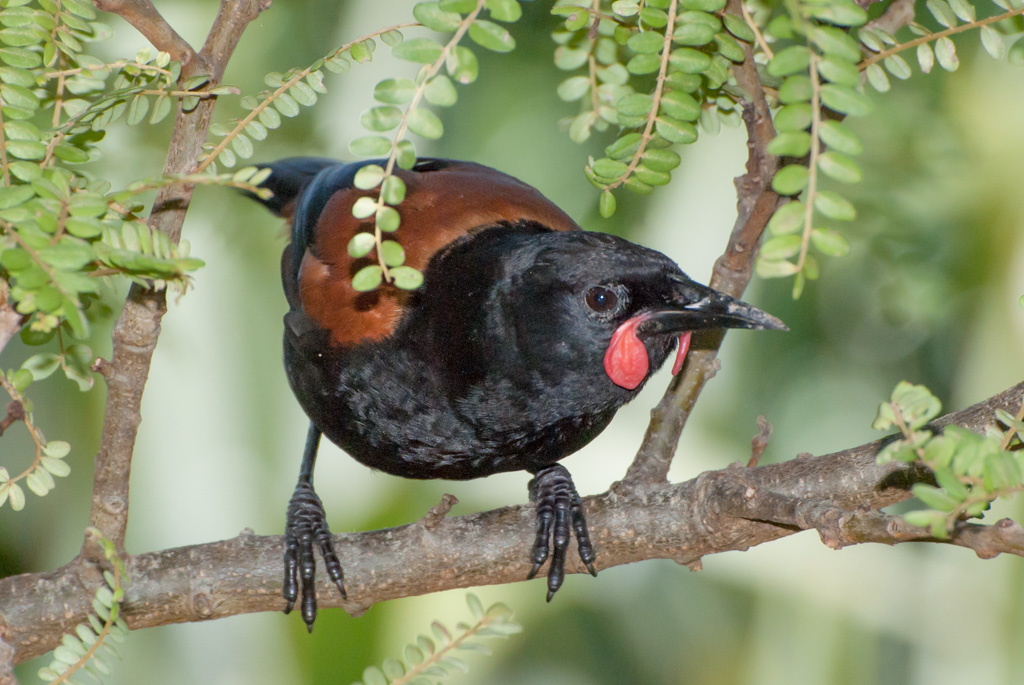
Tīeke (North Island saddleback)
These lively birds, with a distinctive chestnut-brown saddle, were translocated onto the island in 1984, and they quickly established a healthy population. After initially having a few bumper baby years which saw couples producing four clutches a season, two clutches are now typical as the population has reached capacity on the island. Thanks to this healthy population, birds have been transferred to nine sites around New Zealand, including Maungatautari and Auckland Zoo.

Toutouwai (North Island Robin)
Tiritiri’s population of these small inquisitive birds are part of New Zealand’s longest population study, which will help scientists learn more about these forest birds.
Initially translocated in 1992, they have dispersed across the island. A large part of their diet is insects, so don’t be fooled by their apparent friendliness – they are interested in the bugs you may have disturbed when you walk by. They will also tremble one leg to encourage their insect prey to move to the surface.
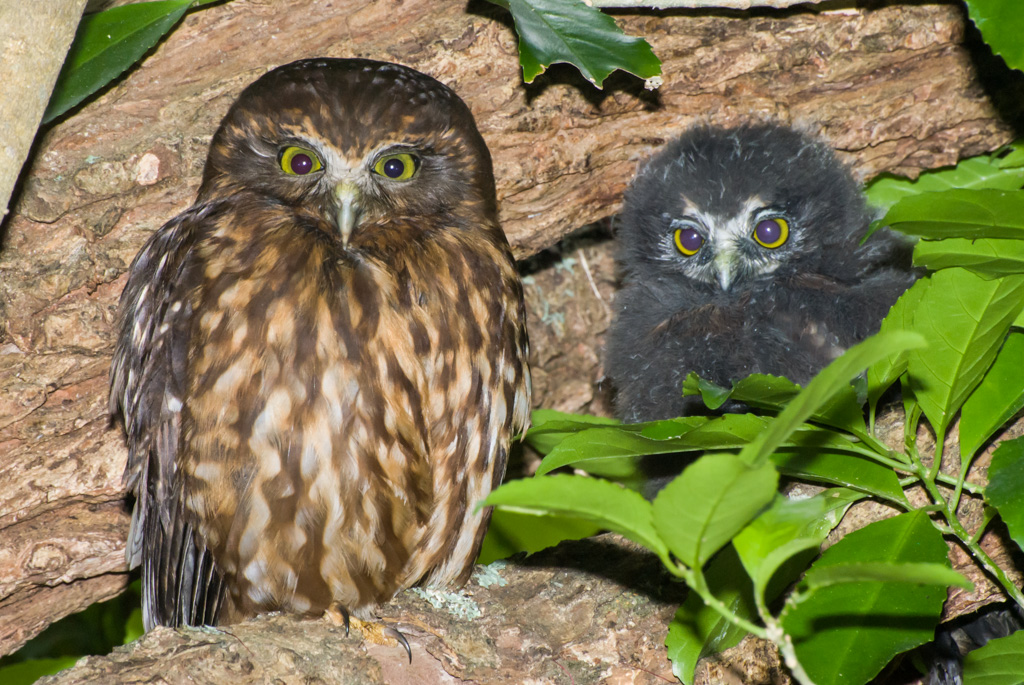
Ruru (Morepork)
The last surviving native owl, the ruru is one of the few natural predators on the island. Their diet is largely made up of insects, though it is known to supplement this with birds and reptiles, particularly when feeding chicks.
Old trees filled with holes make prime nesting sites for ruru, though given that much of the forest on Tiritiri is new, they have taken to nesting in the root systems of trees or inside rotting ponga and cabbage trees.
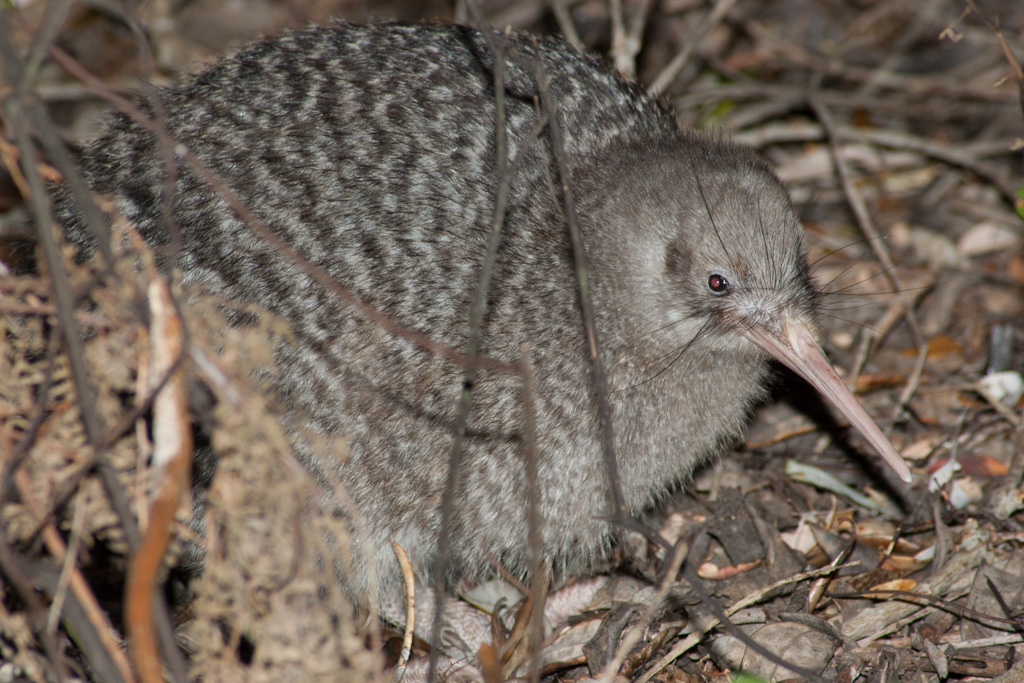
Kiwi Pukupuku (Little Spotted Kiwi)
First released in 1993, this small population of kiwi can be seen foraging for food at night. Tiritiri is known to have produced one of the weightiest females of this species, who broke the scales at 2kg when weighed in 1997.
In unprotected areas around 90% of kiwi chicks die within the first six months due to predation by cats and stoats, so Tiritiri provides a welcome sanctuary and a much needed insurance population.
Download a checklist of the birds you may see on Tiritiri Matangi Island here





